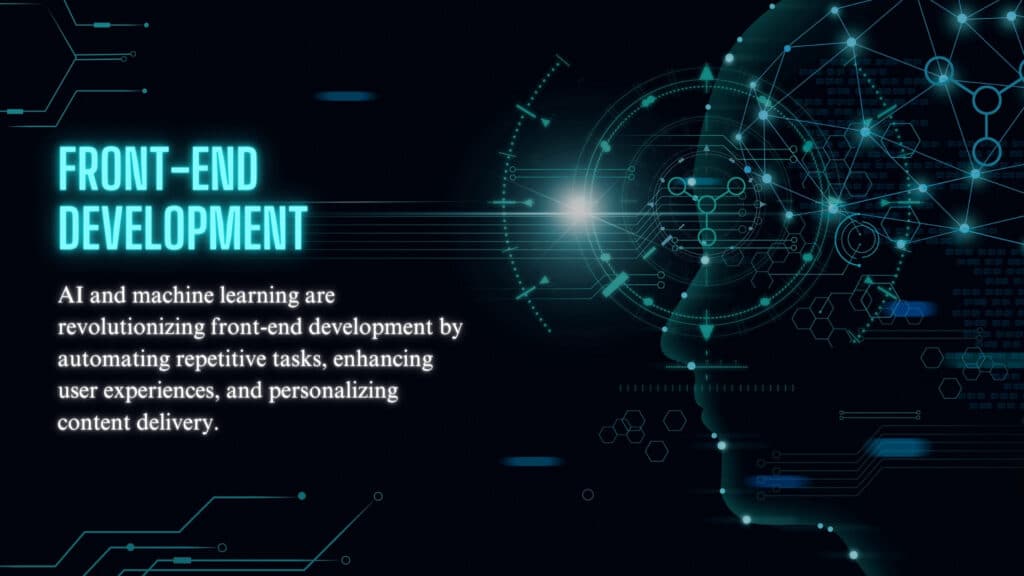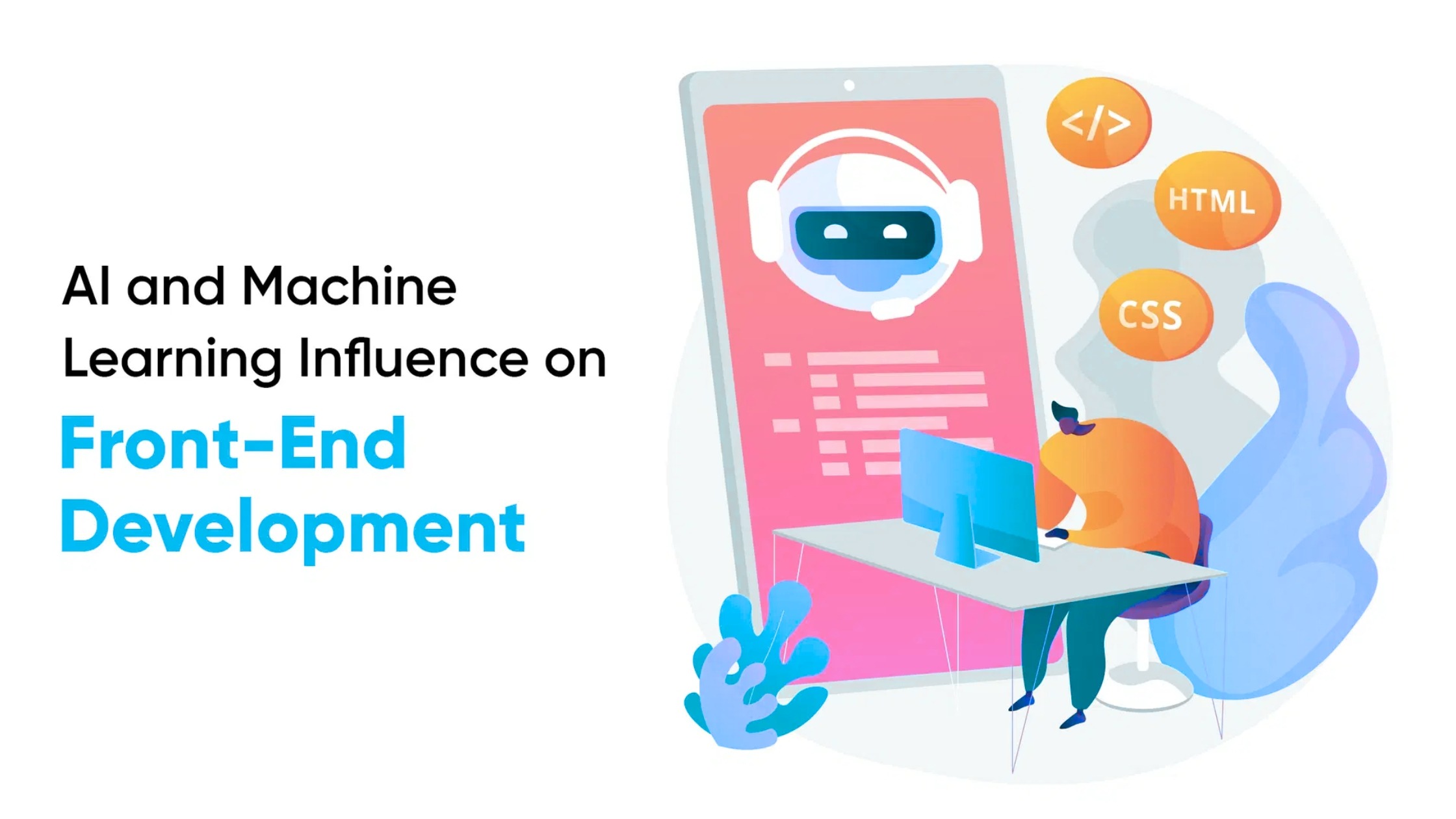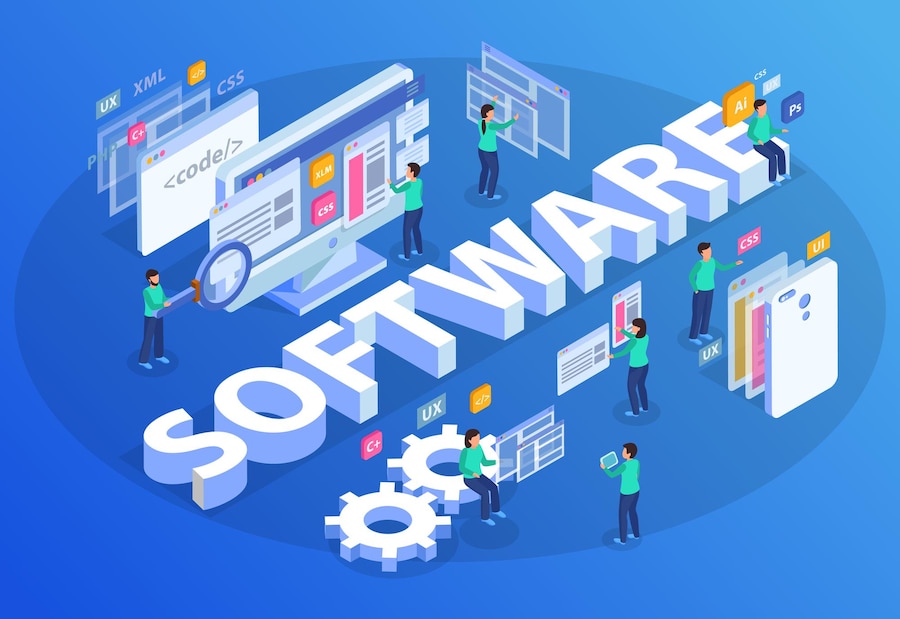In the swiftly evolving international generation, synthetic intelligence (AI) and system-gaining knowledge (ML) are revolutionizing numerous domain names, such as front-cease improvement. As those advanced technologies continue to expand, they provide new equipment and methodologies that drastically decorate the performance and effectiveness of net improvement. This article explores the profound effect of AI and ML on front-end improvement, supported by using statistical statistics to spotlight their effect.
Introduction to AI and Machine Learning in Front-end Development
Front-stop improvement makes a specialty of the user interface and personal experience elements of net applications. Traditionally, this includes enormous manual coding, layout adjustments, and checking out. However, AI and ML are changing the panorama by automating a lot of these obligations, allowing builders to create more dynamic, responsive, and consumer-friendly interfaces.
Enhancing User Experience with AI and ML
1. Personalized User Interfaces – One of the most amazing influences of AI on front-quit improvement is the potential to create customized personal experiences. AI algorithms examine user behavior and options to tailor the interface to personal customers. According to a have a look at by Accenture, 91% of clients are more likely to store with manufacturers that offer applicable gives and pointers. This personalization is made possible through a system gaining knowledge of fashions that expect user needs and modify the content material dynamically.
2. Chatbots and Virtual Assistants – AI-powered chatbots and virtual assistants are increasingly incorporated into websites to enhance patron interaction. This equipment uses natural language processing (NLP) to apprehend and reply to user queries in real time. Gartner predicts that by way of 2022, 70% of patron interactions will involve emerging technologies, including system mastering programs, chatbots, and cell messaging. This shift reduces the want for vast human customer support and complements personal satisfaction.
AI and ML in Design and Development Automation
1. Automated Code Generation
Machine studying fashions can now generate code snippets primarily based on given requirements. Tools like DeepCode and Kite use AI to indicate code completions, hit upon insects, and provide optimizations. A survey with the aid of GitHub in 2020 found that builders use AI-powered code assistants mentioned a 20-30% boom in productiveness.
2. Design Tools
AI-pushed layout gear like Adobe Sensei and Sketch2Code remodel sketches into functional HTML/CSS code, substantially decreasing the time required for the front-stop development. These equipment utilize picture popularity and device learning algorithms to interpret and convert visible designs into code.
3. Testing and Debugging
Automated trying out and debugging are vital for maintaining high-quality front-quit packages. AI can predict capability insects via reading beyond code changes and testing consequences. According to a file by way of Capgemini, AI-based checking out tools can reduce the time spent on trying out sports by as much as 50%. This performance allows developers to consciousness greater on growing revolutionary functions as opposed to being slowed down by using repetitive trying out duties.
Predictive Analytics and User Behavior Analysis

AI and ML can expect user behavior by analyzing big quantities of data. For instance, Netflix uses ML algorithms to advocate suggestions primarily based on person viewing conduct, leading to a reported 75% of consumer interest being pushed through those pointers. In front-end improvement, similar predictive analytics can decorate person engagement by way of anticipating consumer wishes and offering applicable content proactively.
Heatmaps and User Interaction Analysis – AI tools like Hotjar and Crazy Egg provide heatmaps and session recordings, offering insights into how users interact with web pages. These tools use machine learning to analyze click patterns, scroll depth, and other user interactions. The insights gained help developers optimize layouts and improve user experience, leading to higher conversion rates.
AI-Driven Accessibility Improvements
Ensuring web accessibility is a critical aspect of front-end development. AI tools like Google’s Accessibility Scanner and axe-core assist developers in identifying and fixing accessibility issues. According to the World Health Organization, over 1 billion people live with some form of disability, making accessibility improvements not just a legal requirement but also a moral imperative. AI aids in creating inclusive web applications by automatically suggesting or implementing necessary adjustments.
Challenges and Considerations
1. Ethical and Privacy Concerns – While AI and ML offer significant benefits, they also raise ethical and privacy concerns. The use of AI in personalizing user experiences requires collecting and analyzing vast amounts of user data. Developers must ensure compliance with data protection regulations such as GDPR and CCPA to protect user privacy.
2. Skill Gap – The integration of AI and ML in front-end development necessitates new skills. Developers need to be proficient not only in traditional front-end technologies but also in AI and ML concepts. According to LinkedIn’s 2020 Emerging Jobs Report, AI specialist roles have seen a 74% annual growth over the past four years. Continuous learning and adaptation are essential for developers to stay relevant in this evolving field.
Future Trends
The influence of AI and ML on front-end development is expected to grow even further. Future trends include the development of more advanced AI-powered design tools, increased use of voice-activated interfaces, and more sophisticated predictive analytics. As AI technologies become more accessible, even small development teams will be able to leverage these tools to create highly personalized and efficient web applications.
Conclusion
AI and machine learning are transforming front-end development by automating tasks, enhancing user experiences, and providing deeper insights into user behavior. The integration of these technologies leads to more dynamic, responsive, and user-friendly web applications. Despite the challenges, the benefits of AI and ML in front-end development are substantial, offering a glimpse into a future where web development is more efficient and user-centric.
By embracing AI and ML, developers can stay ahead of the curve, creating innovative and engaging user experiences that meet the demands of a rapidly changing digital landscape.









